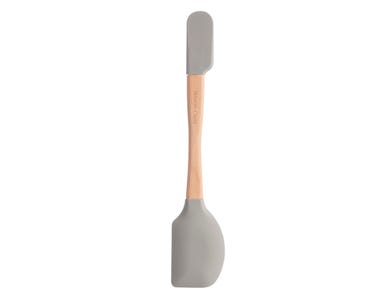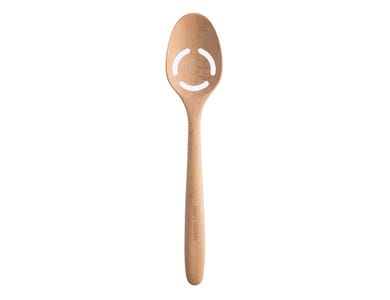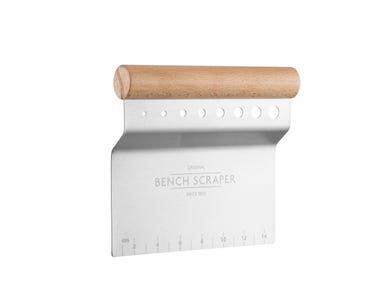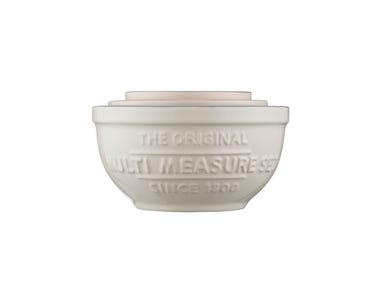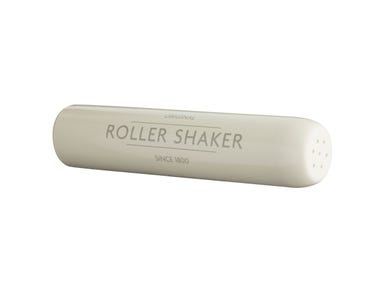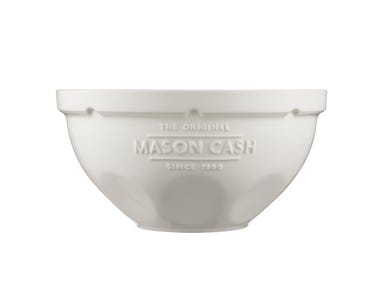A Guide To Baking Bread
Once you've made your dough, it's nearly time to bake. Follow our guide to baking bread with our five simple steps.
Step One - Shaping the Loaf
You can make any shape of loaf you like, but we will focus here on shaping a baguette type stick, a tin loaf and round rolls.
How to shape a baguette
- From a kilo batch you can usually make four of these long, thin loaves, they should weigh about 250g each.
- With the dough smooth side down on your work surface, prod it flat, and then roll it up towards you fairly tightly. Now working with both hands flatten, roll and stretch the dough into shape making it as thin and long as you like, remembering, of course, that it still has to fit in your oven. You can leave the ends rounded.
How to shape a tin loaf
- With your dough smooth side down, prod it fairly flat with your fingertips until it is as wide as your tin is long. Now roll up the dough towards you as tightly as you can, then press along the seam with your fingers and lay seam side down. Smooth and stretch the ends down and tuck ten underneath. Lift up the dough and drop it into the loaf tin.
How to shape bread rolls
Weigh or slice off pieces of dough between 100g and 150g, according to how large you want your rolls to be, but do try to keep them roughly the same size. Choose any shape you like, to shape rounds, simply follow the tutorial for shaping a round loaf.
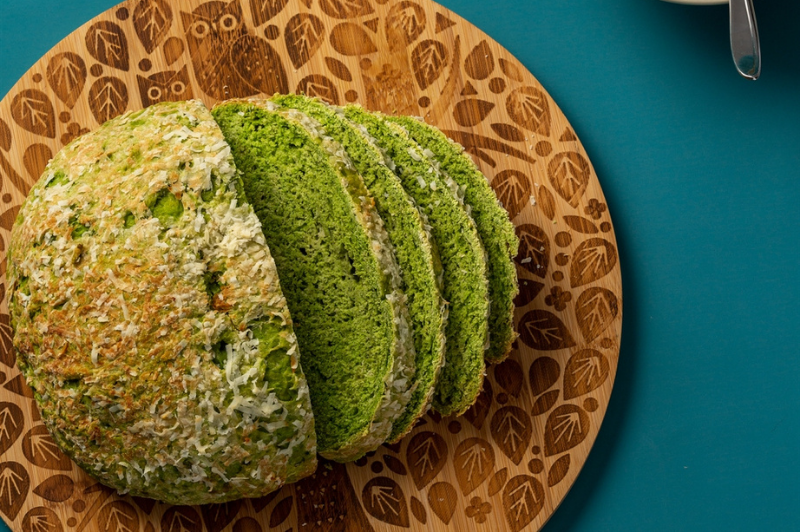

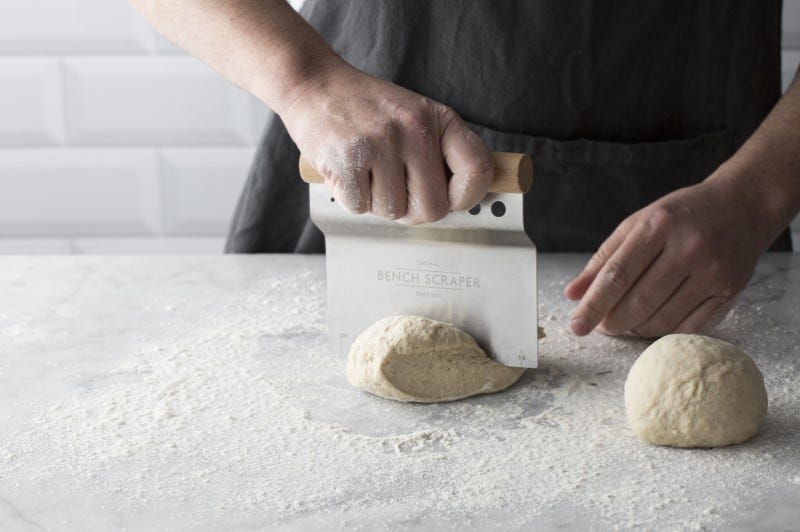

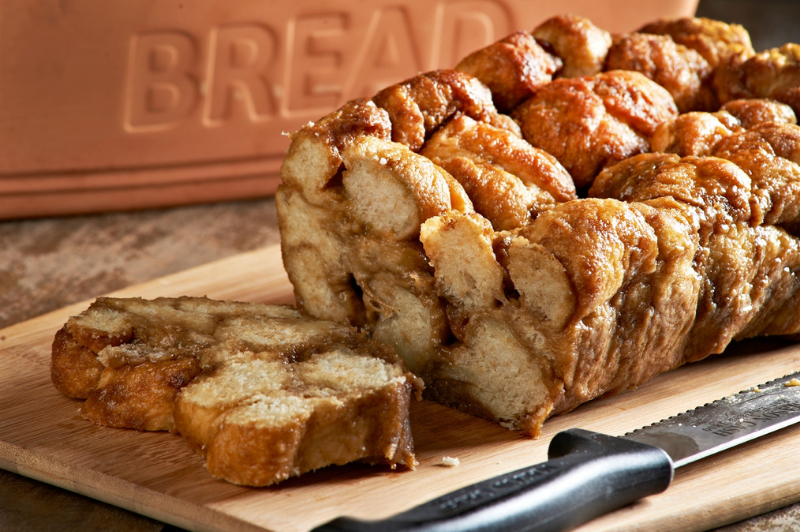

Step Two - Leave To Prove
- Proving is the final rising of your shaped loaf before baking (the fact that your dough rises a final time ‘proves’ that it is still active). If you are not baking in a loaf tin, you will need to sit it in a basket, or on a cloth or board, whichever you use, dust it generously with flour. Loaves in proving baskets should always be smooth side down. With linen cloths or wooden boards, keep proving loaves the right way up, as they will keep their shape better this way. If you are using cloths, you can tuck them up a little to give some support to the sides of the loaves. This is particularly effective with baguettes. Always cover your dough with plastic bags.
- You want the dough to roughly double in size; this could take as little as 20 minutes, or as long as 2 hours, depending on the vigour with which the dough is fermenting. Keep an eye on the dough as it proves. When it’s looking significantly bigger, give it a gentle squeeze at the sides. Do this every so often and you will feel it getting lighter and airier. If, after this, the dough springs airily back to its original shape, and if it has almost (but not quite) doubled in size, it is about right.
- If the bread is over proved, the gluten will lose its structure, the dough will start to look a little saggy, and the finished crumb will end up coarse, and too ‘holey’. Under proved bread will be a little dense and heavy, and also prone to the dreaded ‘flying crust’ syndrome, whereby the top crust deceitfully balloons away from the rest of the dough in the oven. It is always better to slightly under-prove rather than over-prove dough, as it will rise some more when baking in the oven.
Step Three - Slash The Tops
- Making cuts in a loaf helps it to expand in the oven. Proved bread already has a slightly dry crust from contact with the air, which inhibits rising, and slashing through this crust exposes the soft, stretchy dough inside.
- There are a couple of exceptions where you may not want to slash your bread. This includes round rolls as they keep their shape better without slashing the dough, and low gluten breads, such as rye which rise very little in the oven anyway.
- Using a bread knife, gently slash the top of your dough without squashing it, you can use two or three strokes on each cut if necessary. Make each cut up to 1cm (half an inch) deep. Try to keep the cuts evenly spaced and at the same depth.
- Slashing is a very good test of the quality of your dough. If it is well-kneaded and perfectly risen, the cuts will open out, even as you make them.
Step Four - Bake The Bread
- Once you’ve slashed your loaf, spray it all over with water. This is to create extra steam which helps make the crust nice and crispy. Before you pre-heat your oven, place a roasting tin at the bottom of the oven. Once the oven is heated, place your bread in. Then standing as far back as possible, pour a good slosh of boiling water from the kettle into the roasting tray (keep your face back) and quickly shut the door.
- Keep the door shut for a few minutes, to hold the heat in; this is the time for ‘oven spring’ the final rise before the crust hardens. After 10 minutes, have a look. Shuffle the bread about if it is colouring unevenly and adjust the temperature if needed.
Temperature for baking bread
200°c / Gas Mark 6 – if the crust is still very pale
180°c / Gas Mark 4 – if the crust is noticeably browning
170°c / Gas Mark 3 – if the crust seems to be browning quickly
- These temperatures apply to fan-assisted ovens. If you are using a conventional non-fan-assisted gas or electric oven, you will need to have your oven approximately 15°c / 1 Gas Mark hotter. Continue baking, adjusting the temperature as you see fit. The total baking time will depend on your particular oven and the size of your loaves. If during baking the crust appears to be fully browned, cover it loosely with foil to prevent over-browning.
- Use the following timings as a guide, but rely on your own judgement. These represent total baking time in the oven:
12 rolls – 10-20 minutes
3 small loaves – 30–40 minutes
2 large loaves – 40–50 minutes
- When your bread is fully baked, it will feel lighter than when it went in. This is because it will have lost about 20 percent of its weight through evaporation. The crust should feel firm (though less so on rolls) and it should sound hollow when tapped on the base. This is no definite test though; a loaf will also sound hollow when it could really do with another 10 minutes of baking. So, if in doubt, bake for a bit longer. If your bread is a little over-baked, all it will have is a slightly over-thick crust, and there is nothing wrong with that.
Step Five - Leave To Cool
- If you have a cooling rack, put your bread on it. If not, a propped-up oven shelf will do fine. Now leave it alone to cool. Your bread is full of steam, and is in fact still cooking. You must let it finish, in its own time. If you cut hot bread, it will be steamy, heavy and doughy. Hot rolls are about the only exception to the leave-it-alone rule, but only if you pull them apart. Don’t squash or cut them.


